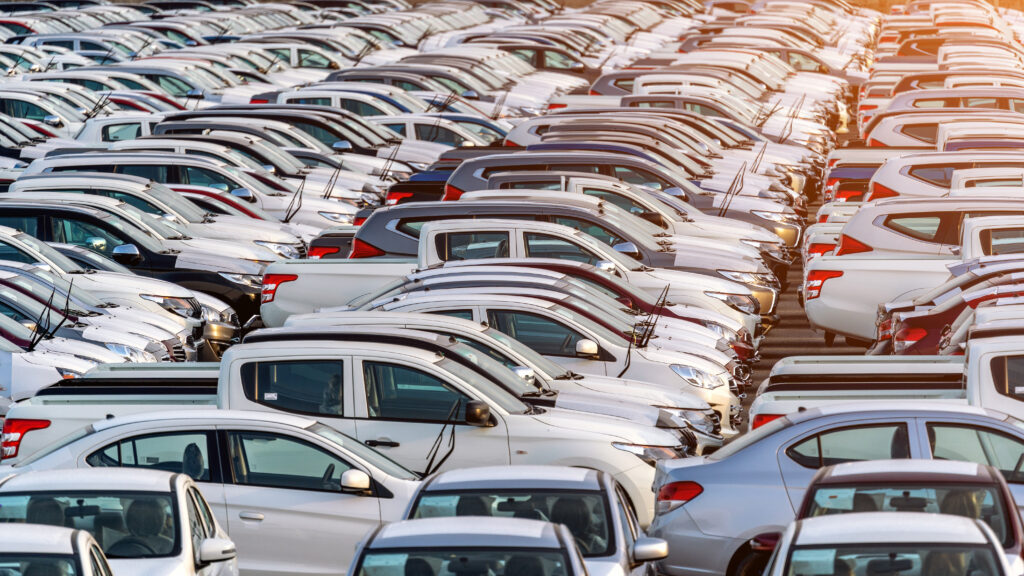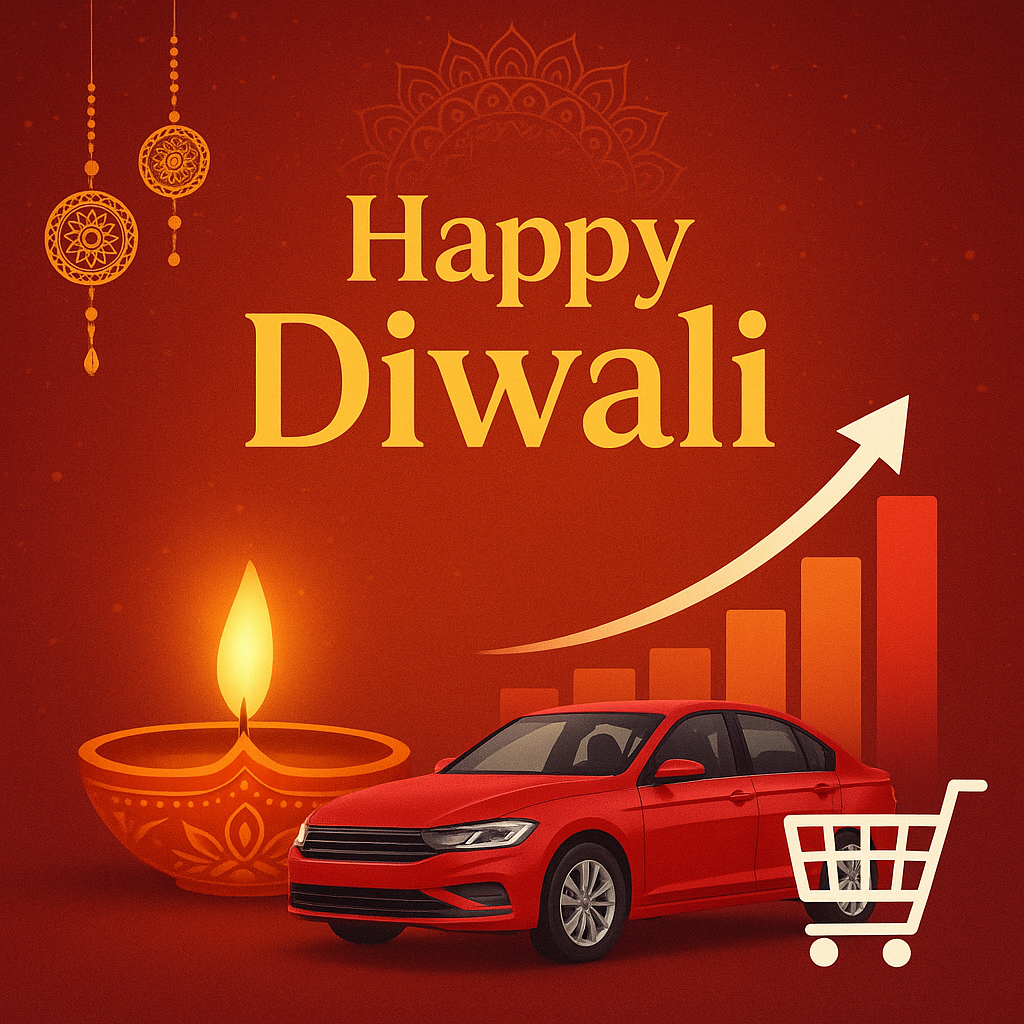India’s festive season in 2025 arrived with double cheer – celebrations and tax relief. With GST 2.0 reforms (reduced tax slabs and lower tax rates) officially rolling out on September 22, 2025, just as the Navratri season began, the timing couldn’t have been better for both the automobile and the e-commerce sectors.
From car showrooms to online marketplaces, the results were immediate: sales surged, consumer sentiment improved, and digital demand spread beyond metro cities. Here’s how GST 2.0 reforms turned the festive mood into an economic boost, with real examples from leading brands like Mahindra, Amul, and Flipkart.
The Impact of GST 2.0 Reforms on Automobile and E-commerce in Numbers
- Overall: 34% YoY increase in retail sales
- Two-wheelers: 36% YoY increase
- Passenger vehicles: 34.8% YoY increase
- Commercial vehicles: 14.8% YoY increase
- Tractors: 18.7% YoY increase
- Dealerships reported a 35% to 40% surge in footfalls.
- E-commerce market reported 24% YoY growth with sales revenue of around 1.2 lakh crore.
- Major factors behind this rising demand are revised GST rates, favourable monsoon results in stronger purchasing power, and strong festive sentiment.
According to PIB, around 65% of Indians live in rural areas. Therefore, rising purchasing power naturally improves liquidity in the economy, backed by strong religious and cultural sentiments around Navratri, Durga Puja, Diwali, Chhath Puja, and more.

(Source: The Statesman and ET Auto)
Saharsh Damani, CEO of the Federation of Automobile Dealers Association, said, “The phenomenal increase in the demand during the ongoing festive season (September and October) stands at 20 per cent, and is expected to be even better.”
Let’s explore the new GST rates for diverse sectors and industries.
What is GST 2.0?
GST 2.0 is the upgraded version of India’s Goods and Services Tax framework, introduced to simplify tax slabs and stimulate consumption.
Effective from September 22 2025, GST 2.0 rationalised rates across multiple categories to make essentials cheaper and reduce the burden on consumer goods and durables.
| Category | Previous Rates (GST 2017) | New Rates (GST 2.0 in 2025) | Examples Items |
| Essential Items (food, dairy, and medicines) | 5% | 0% | Crucial Medicines, Paneer, Milk, Cereals, and more |
| Apparel and Footwear (below Rs. 2500) | 12% | 5% | Ready-made clothes and footwear |
| Electronics and Appliances | 28% | 18% | TVs, ACs, and other appliances |
| Furniture and Home Items | 18% | 5% | Wooden furniture and decor |
| Small Cars | 28% | 18% | (Petrol/LPG/CNG) below 1200cc and 1500cc for Diesel Cars |
| Motorcycles and Scooters | 28% | 18% | Below 350cc |
| EV Vehicles | 12% | 5% | Small cars, scooters, etc |
| Luxury & Sin Goods | 28% | 40% (new slabs) | Luxury cars and tobacco products |
These changes effectively lowered prices across categories that dominate festive spending, from smartphones and apparel to automobiles.
E-commerce Sector: Festive Sales Skyrocket by 25%
The e-commerce industry was one of the earliest beneficiaries of GST 2.0. According to the Economic Times, platforms like Amazon, Flipkart, and Meesho recorded a 25% surge in festive sales compared to 2024.
| Key Indicators | 2024 | 2025 (Post GST 2.0) | Change |
| Sales Growth in Festive Season (Sep-Oct) | 10% | 25% | 15% Increase YoY |
| Total Orders (e.g., Flipkart Big Billion Days) | 38 Million | 50 Million | 32% Increase YoY |
| Tier 2 and 3 Contribution | 58% | 70% | Wider Reach |
| Top selling categories | Electronics, Fashion, and Groceries | Same plus a rise in Premium Segment Shopping | Upgrading Trend |
Why E-commerce Boomed Post GST 2.0
- GST rate cuts encouraged bigger discounts. Platforms like Amazon, Flipkart, Meesho, and Myntra launched “GST 2.0 Offers” banners highlighting tax cuts on electronics and apparel.
- Buyers shifted from budget to mid-range phones and TVs. Premiumisation is a fast-rising trend in India because of rising urbanisation, desire for a global lifestyle, the aspirational middle class, and the growing Q-Commerce segment.
- Lower taxes, better logistics and favourable monsoon increased rural consumption.
- Over 70% of SMEs reported increased margins and higher volumes.
Example
Dairy giant Amul saw a 12–15% jump in festive sales, driven by GST exemption on dairy products and strong demand for sweets, chocolates, and butter-based snacks during Navratri and Diwali.

Automobile Sector: 35% Surge in Festive Sales
The auto industry witnessed one of its best Navratri seasons in years. As per HDFC Sky and FADA, passenger vehicle sales grew 35% year-on-year, while two-wheelers and tractors also saw double-digit growth.
| Vehicle Type | Navratri (2024) | Navratri (2025) | Growth |
| Passenger Vehicles | 1,61,443 | 2,17,744 | 35% Increase |
| Two-Wheelers | 10, 92, 874 | 13,68, 244 | 25% Increase |
| Commercial Vehicles | 33,176 | 41,021 | 24% Increase |
| Tractors | 41,881 | 49,027 | 17% Increase |
What’s Driving This Growth in the Automobile Sector?
- Lower component taxes reduced overall car prices.
- Festive offers + GST cuts made EMIs cheaper and attractive.
- Rising rural incomes boosted two-wheeler and tractor demand.
- Strong consumer confidence due to lower inflation and better credit flow.

Automobile Sales Performance: Brand Specific Data
- Mahindra & Mahindra reported a 22% spike in SUV bookings during Navratri 2025, led by models like Scorpio N and XUV700.
- Maruti Suzuki received 4 lakh bookings in the last four weeks. According to Partho Bankerjee (Sr. Executive Officer- Marketing & Sales at Maruti Suzuki India) in an interaction with PTI India, “This 1 lakh bookings each week for the four weeks straight is the all-time highest sales for us in India.”
- Hyundai sold 11,000 units on the first day of Navratri and expected a significant sales performance around Diwali, Chhath, Dhanteras, and other festivals in the September & October season.
- Mercedes-Benz achieved 36% growth in its Navratri sales YoY and sold over 2,500 luxury cars in India. BMW sold 11,978 cars during Q1 to Q3 of 225.
- Tata Motors achieved its highest-ever monthly sales with 60,907 units in September 2025.
Conclusion
The GST 2.0 reforms have transformed India’s 2025 festive season into a powerful growth catalyst. By aligning tax rationalisation with peak consumer spending, the government has stimulated demand across automobiles, e-commerce, and FMCG sectors.
Brands like Mahindra, Amul, Flipkart, and Maruti Suzuki are witnessing historic sales highs, reflecting how policy precision and festive timing can together spark economic revival. While experts expect demand to normalise after Diwali, GST 2.0’s simplified structure and price relief promise sustained benefits, fueling affordability, compliance, and confidence.
In short, GST 2.0 is not just a tax reform, it’s a festive-season growth story for New India.
Frequently Asked Questions
What is GST 2.0?
It’s the revised Goods and Services Tax regime announced on September 3 and came into effect from September 22, 2025. It simplified rate slabs (0%, 5%, 18%, and 40%) to reduce consumer prices and boost compliance.
How did GST 2.0 benefit e-commerce?
It reduced taxes on electronics, fashion, and essentials, leading to 25% higher festive sales and deeper penetration in Tier-2 and Tier-3 cities.
How did GST 2.0 affect automobile sales?
Cars, SUVs, EVs, and two-wheeler prices fell slightly, encouraging record Navratri sales with 35% year-on-year growth.
Which brands saw significant festive gains?
Mahindra SUV bookings rose 22%, Amul sales grew 15%, and Flipkart orders crossed 50 million during the first festive week.
What’s next for India’s economy post-GST 2.0?
Analysts expect steady consumption through Q4 FY2025-26, driven by improved affordability and a more efficient tax structure.
About The Author
I’m Biswajit Singh, a storyteller at the crossroads of business, technology, and current affairs. With a Master’s in Mass Communication and English Literature and 8+ years in SEO content writing, I craft narratives that decode AI, ML, digital trends, and global shifts. My mission: turning complex ideas into content that informs, engages, and inspires.

Very detailed and helpful.